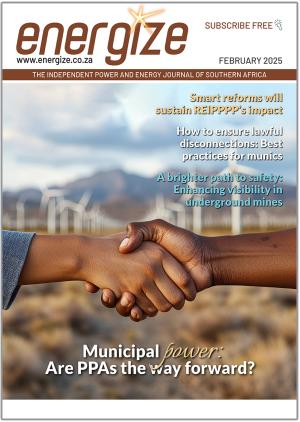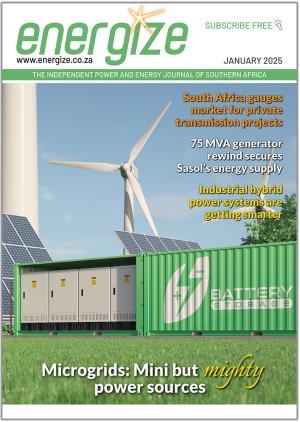Eskom is gearing up for a defining year in 2025 with major developments set to shape South Africa’s electricity landscape. The utility outlined an ambitious roadmap for the year ahead to the Portfolio Committee on Electricity and Energy on December 4. Among its key targets are:
- Achieving a 70% energy availability factor (EAF) by March.
- Completing the legal separation of its distribution division by 2026.
- Adding over 2 500 MW of generation capacity to the grid by the end of the financial year.
The state utility is also ramping up efforts to diversify its energy mix with investments in renewables and repurposing projects as part of its Just Energy Transition strategy. However, success will depend on overcoming longstanding challenges including municipal arrears, operational inefficiencies and infrastructure modernisation.
Generation recovery and capacity boost
One of Eskom’s most critical goals for 2025 is achieving a 70% EAF – a target that hinges on the successful return of several generating units currently offline. The utility expects to add 2 524 MW of capacity by the end of its financial year, bolstered by the return of Koeberg Unit 2 (930 MW) and Kusile Unit 6 (800 MW) in January along with Medupi Unit 4 (794 MW) in March.
Units brought back online earlier this year – including Kusile 1, 2, 3 and 5 – are already contributing to improved performance. “Despite some delays, these efforts show Eskom’s commitment to enhancing security of supply,” said Group Chief Executive Dan Marokane.
The focus shifts to distribution
With the National Transmission Company South Africa operational since July 2024, Eskom is turning its attention to the legal separation of its distribution division, scheduled for completion by 2026. This process involves tackling several challenges including addressing solvency risks linked to municipal debt, securing lender engagements and obtaining licensing approval from the National Energy Regulator of South Africa, Marokane said.
Distribution infrastructure modernisation will play a key role, particularly the rollout of smart meters and targeted upgrades to reduce non-technical losses due to theft and incorrect billing.
The success of this unbundling effort is essential to ensuring operational independence, fostering transparency and attracting investments critical for modernising the country’s power infrastructure, Marokane added.
Growing municipal debt crisis
Municipal debt remains one of Eskom’s most pressing financial challenges – now exceeding R93,8 billion. Despite National Treasury’s debt relief programme, adherence remains limited with only 11 of 71 approved municipalities meeting payment conditions. This non-compliance continues to undermine Eskom’s financial recovery strategy with arrears growing by R19,3 billion during the year to October.
“The debt relief intervention is welcome but current trends indicate it is unlikely to arrest arrears growth significantly,” said Marokane. National Treasury’s debt relief programme, issued under strict conditions in 2023, has seen limited success as municipalities struggle to adhere to the outlined requirements. Resolving this issue will require tougher enforcement and improved collaboration between Eskom and stakeholders.
Long-term transition
Eskom’s long-term energy transition plans are gaining momentum with the utility projecting a significant shift in its energy mix by 2040, Marokane said. Renewables – including wind, solar and battery storage – are expected to grow from 7 GW in 2025 to 32 GW while coal capacity will decline from 39 GW to 18 GW as part of planned decommissioning. However, Eskom’s plans include delaying the shutdown of coal stations slated for closure before 2025 to 2030, ensuring a more balanced transition period for energy security and community impacts.
“These projects will require extensive funding and partnerships with external stakeholders,” said Marokane. To meet its transition goals, Eskom is also focusing on nuclear and gas as stable baseload energy sources to complement renewables. The pipeline includes initiatives such as the Lethabo photovoltaic plant and repowering projects at Komati and Grootvlei.
Repurposing coal plants and creating jobs through local manufacturing projects like containerised microgrids are key to this approach, Marokane said. Eskom plans to produce 30 containerised microgrids annually as part of its efforts to foster job creation and economic resilience in coal-dependent communities.
Financial stability
Eskom reported positive financial progress in 2024, including a 6,8% reduction in primary energy costs and an R11,9 billion cut in open-cycle gas turbine expenses. However, coal costs remain a concern with a year-on-year increase of R4,34 billion.
As Eskom relies heavily on National Treasury’s debt relief programme, the utility must demonstrate fiscal discipline and efficiency in 2025 to further stabilise its financial position, Marokane said.
“We are turning the corner but more work lies ahead to ensure the sustainability of South Africa’s energy future.”















